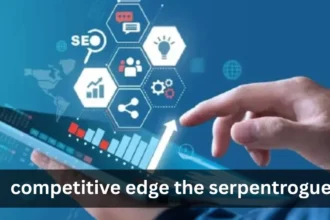Introduction to Text To VDB AI
In an era where data reigns supreme, the ability to convert text into actionable insights is more crucial than ever. Enter Text To VDB AI, a game-changing technology that seamlessly transforms raw textual information into valuable database formats. Imagine turning unstructured text from reports, articles, or even social media posts into structured data you can analyze and use effectively. This isn’t just about convenience; it’s about leveraging your existing resources for smarter decision-making.
As businesses and individuals navigate the digital landscape, understanding how to harness this powerful tool can set you apart from the competition. So, what makes Text To VDB AI such a pivotal player in the world of data conversion? Let’s dive deeper into its significance and discover why mastering this technology could be your next big step toward innovation and efficiency.
Why Data Conversion is Important in the Digital Age
Data is the backbone of today’s digital landscape. As businesses generate vast amounts of information, the ability to convert that data into usable formats becomes crucial.
Without effective data conversion, organizations risk losing valuable insights hidden within unstructured text. The right tools can transform raw information into structured databases, enabling better decision-making and strategic planning.
Moreover, with the rise of big data analytics, companies need to ensure their data is in a compatible format for analysis. This accessibility boosts efficiency and enhances overall productivity.
In an era where time equals money, quick and accurate conversions streamline workflows. They help teams respond faster to market changes and customer needs without getting bogged down by outdated processes.
As we continue navigating this digital age, mastering efficient data conversion methods will remain essential for staying competitive.
How Text To VDB AI Works
Text to VDB AI operates by analyzing textual data and converting it into a structured database format. This advanced technology uses natural language processing (NLP) algorithms to interpret the meaning behind words.
Once the text is parsed, relevant information is extracted. The AI identifies key entities, relationships, and attributes within the data. This ensures that all vital components are captured accurately.
After extraction, the information is organized into a virtual database structure known as VDB (Virtual Database). Here, it can be easily queried and manipulated for various applications.
The beauty of Text To VDB AI lies in its ability to learn over time. As more texts are processed, the model improves its accuracy and efficiency in capturing nuanced meanings from different contexts.
Benefits of Using Text To VDB AI for Data Conversion
Text to VDB AI brings a host of advantages for data conversion tasks. One major benefit is its efficiency. Manual data entry can be time-consuming and prone to errors, whereas this technology automates the process, saving valuable time.
Accuracy is another key advantage. Text to VDB AI minimizes human error by converting text into structured data seamlessly. This leads to more reliable datasets that businesses can trust.
Scalability also plays a vital role in modern operations. Whether dealing with small projects or massive databases, Text to VDB AI adapts easily, providing consistent performance regardless of size.
Moreover, accessibility improves significantly when using this tool. Users from various sectors can extract meaningful insights without needing extensive technical backgrounds. The intuitive interface makes it user-friendly for everyone involved in the data conversion process.
Cost-effectiveness cannot be overlooked. Reducing personnel hours spent on mundane tasks allows organizations to allocate resources more strategically elsewhere.
Real-Life Examples of Successful Data Conversion with Text To VDB AI
Companies across various sectors have harnessed the power of text to VDB AI for remarkable transformations. For instance, a healthcare provider utilized this technology to convert patient records into structured databases. This streamlined access to critical information improved treatment timelines significantly.
In the retail industry, a major brand adopted text to VDB AI to analyze customer feedback from surveys and reviews. By converting unstructured data into actionable insights, they fine-tuned their product offerings and enhanced customer satisfaction rates.
Another compelling case is in academia where researchers converted extensive documents related to climate studies into organized databases. This facilitated easier collaboration among scientists and accelerated research efforts on global warming initiatives.
These examples illustrate that effective data conversion can lead not only to operational efficiency but also drive innovation and growth across diverse fields.
Challenges and Limitations of Text To VDB AI
Despite its advantages, Text To VDB AI faces certain challenges. One significant limitation is the need for accurate input data. If the source text contains errors or ambiguities, the resulting VDB may also inherit these flaws.
Moreover, handling complex datasets can be tricky. Not all information translates seamlessly into a visual database format. The intricacies of relationships and hierarchies in data might get lost during conversion.
Additionally, there’s often a learning curve involved. Users must familiarize themselves with software tools to maximize their potential fully. This requirement can deter some from adopting this technology.
Privacy concerns loom large in any data-driven process. Sensitive information handled by Text To VDB AI needs robust security measures to prevent unauthorized access and ensure compliance with regulations.
The Future of Data Conversion with Text To VDB AI
The future of data conversion is poised for revolutionary changes with Text To VDB AI at the forefront. As businesses grapple with enormous volumes of unstructured data, efficient processing becomes crucial.
Emerging technologies powered by artificial intelligence will streamline this transformation process. They’ll enhance accuracy while minimizing manual intervention. Fast and reliable conversions will empower organizations to make quicker decisions based on real-time insights.
Moreover, customization options are becoming increasingly sophisticated. Users can tailor models that fit specific industry needs, further enhancing relevance and efficiency in conversion tasks.
As AI continues to evolve, integration capabilities with other platforms will expand too. This interconnectedness promises seamless workflows across various systems and applications.
In a rapidly changing digital landscape, staying ahead means embracing these innovations in data conversion technology. The potential for enhanced productivity and decision-making through Text To VDB AI is truly remarkable.
Conclusion
The landscape of data conversion is evolving rapidly. As businesses continue to generate vast amounts of information, finding efficient and reliable ways to manage that data becomes crucial. Text To VDB AI represents a significant step forward in this journey.
This innovative technology not only simplifies the process but also enhances accuracy and accessibility. Organizations can expect improved workflows and decision-making capabilities by harnessing the power of text to VDB AI. The benefits are clear, ranging from saving time and resources to ensuring that critical insights remain at their fingertips.
However, it’s essential to approach this technology with an understanding of its limitations. By addressing challenges head-on, users can maximize the advantages while minimizing potential drawbacks.
As industries adapt to these changes, embracing text-to-VDB AI will undoubtedly play a pivotal role in shaping our future interactions with data. Those who take advantage of these advancements today will likely lead tomorrow’s innovations in various fields.

















